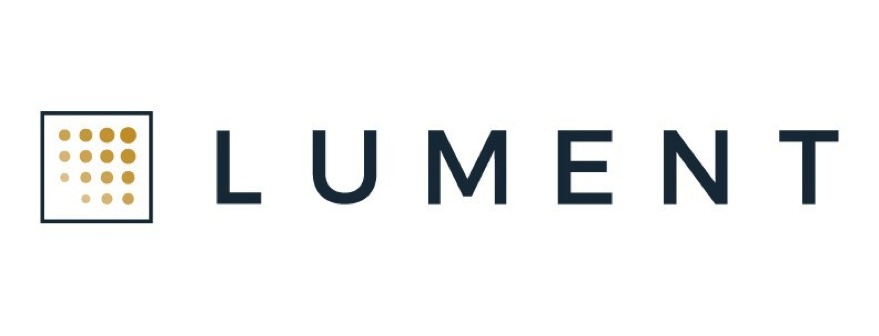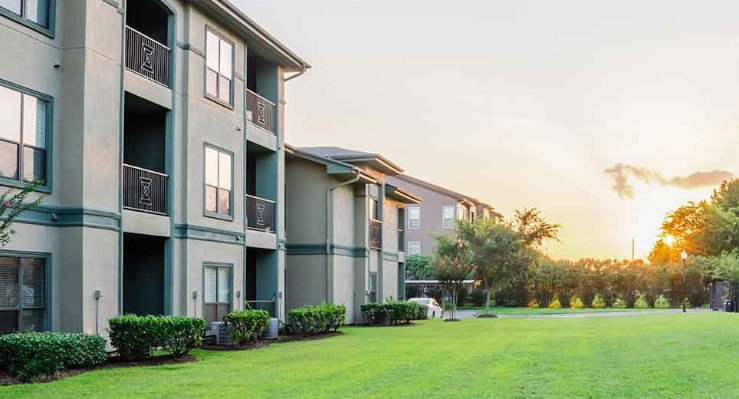
Key Takeaways
- Recent increases in mortgage interest rates complicate apartment acquisitions by limiting the degree of leverage that can be achieved using conventional debt and reducing cash-on-cash returns.
- Investors pursuing acquisition strategies may consider using alternative financing strategies to achieve higher debt leverage, including bridge and mezzanine loans and preferred equity.
- Lument is one of the few lenders in the multifamily space with the capability of delivering each of these alternative funding sources as well as conventional financing.
If you consider multifamily real estate assets to be a good investment, you are in good company. At mid-year, asset managers and private equity firms alone held an estimated $ 325 billion of levered dry powder set aside for this purpose, enough cash to finance nearly every acquisition closed in the United States in 2021, the highest investment sales volume on record.
Despite nearly unanimous support for the asset class, however, multifamily transaction volume in the third quarter slumped year-over-year for the first time since the peak of the pandemic. The mainspring was a sharp rise in mortgage financing costs triggered by high inflation and the Federal Reserve’s commitment to raising rates to bring it under control. Generic rates for 65 percent LTV first mortgage debt stood on 5.71 percent at the end of November, representing an increase of 248 basis points since the beginning of the year.
Even as financing costs soared, asset pricing changed very little. Initial net cash flow yields of transactions closed in 3Q22 averaged only 4.6 percent, according to Real Capital Analytics, an increase of 10 basis points from 2Q22 levels. At the same time, cap rates applicable to assets in the most hotly pursued markets, like Phoenix and Austin, where rapid rent growth is widely expected to persist regardless of a recession, continued to compress, falling to as low as 3.7 percent. In response, more investors chased deals in less competitive secondary and tertiary markets seeking to capture higher cap rates, trading stronger rent growth and space demand prospects for a bump in initial yield.
The resulting disconnect between funding costs and property yields gives rise to a condition known as “negative leverage,” where the cost of debt exceeds the purchase yield. Negative leverage reduces cash-on-cash yields below the rate that would be achieved without debt leverage and effectively extends the holding period required to meet targeted internal rates of return.
While negative leverage complicates the investment sales proposition, deals nevertheless are being closed. Investors have several reasons for pursuing an acquisition under negative leverage circumstances, but two are most common. Either prospective buyers foresee further rapid rent growth that over time will elevate cash flow yield above the mortgage interest rate, thereby creating positive leverage, or believe a target property can generate improved performance after value-add property renovations and enhanced property management.
How can prospective investors looking to carry out these strategies finance acquisitions when equity is scarce? The following is a review of financial tools that can be employed to fund acquisitions under negative leverage conditions.
Conventional Loan Structures
Above all, there is no substitute for equity under current market conditions. But even for buyers with access to lower-cost equity, prospective returns from transactions at current cap rates will be low during the first years of ownership. For this reason, most investors prefer greater debt leverage than 60 percent.
Unfortunately, under current market conditions underwriting constraints render it nearly impossible to obtain this degree of leverage with a standard conventional product. As the practical limit for debt service coverage for market rate properties is 1.25 times, the maximum achievable gross acquisition loan proceeds for a standard 5.50 percent rate 10-year balloon, 30-year amortization loan for a property yielding 4.6 percent is about 53 percent of the purchase price. Maximum leverage for an asset yielding 4.0 percent is still lower, about 47 percent.
Interest-only provisions can provide some leeway. In the current market a substantial majority of conventional loans are structured with IO periods, most five-years in duration or longer. With IO provisions, the loans in the previous example could achieve debt leverage as high as 67 percent and 58 percent, respectively, for properties yielding 4.6 percent and 4.0 percent.
Bridge Financing
Although investors may be able to raise sufficient proceeds using conventional debt with an IO provision, some will prefer to avoid committing to today’s relatively high mortgage interest rates for the seven- to ten-year term typical of a permanent conventional loan. For these investors bridge loans offer term flexibility that may suit their needs.
Bridge financing may be an attractive alternative when a buyer needs greater leverage or faster execution than can be achieved using conventional debt. Bridge loans are shorter-term first mortgage instruments with balloon maturities. Historically, bridge loans have maximum terms of 36 months, but maturity extensions can be negotiated on a case-by-case basis. Indeed, under current market circumstances, maturities longer than four years are becoming increasingly common.
The maximum loan-to-value ratio of a bridge loan is negotiable; however, each financing is underwritten to qualify for a conventional loan takeout upon maturity. This effectively caps the LTV (or loan-to-cost ratio in the case of a value-add acquisition) at 80 percent of underwritten value at maturity.
Bridge loans are typically structured with floating-rate notes. In most cases, this means a loan with an interest rate indexed to the 30-day average of the Secured Overnight Financing Rate (SOFR). In late November, the index was quoted at 3.81 percent. Pricing spreads vary based on the underwritten risk of the transaction and market conditions at the pricing date but recently fell in the 400 to 600 basis point range.
Index risk can be, and in most cases is, hedged using interest rate caps. Cap costs currently are higher than normal due to market volatility and the upward sloping shape of the forward interest rate curve. Recently, the cost of a three-year SOFR caps fixed at 4.00 percent were priced at approximately 2.15 percent of the mortgage balance, adding the equivalent of about 73 basis points to the cost of funds amortized over the debt term expressed on a bond equivalent yield basis.
Pricing spreads for bridge loans are more volatile than is the case for conventional mortgage loans. Investors should consider that during periods of unusual capital markets volatility bridge financing may not be available.
Mezzanine Financing
When a buyer is interested in maximizing total loan proceeds rather than bridging the period necessary to qualify for a longer-term permanent loan, mezzanine debt may be a preferable alternative. Mezzanine loans are typically configured as subordinated debt instruments structured in tandem with a traditional senior loan. The objective is to achieve greater leverage than is possible with a traditional permanent loan at an attractive blended cost of funds. Borrowers generally retire the higher cost mezzanine slice when cash flow from the acquired property increases.
Conventional lenders now are more open to the use of mezzanine loans to maximize transaction leverage. For example, Fannie Mae permits a select group of its Delegated Underwriting and Servicing (DUS) lenders known as DUS Lender Affiliates (DLA), including Lument, to underwrite and fund mezzanine debt in conjunction with a fixed-rate first-lien Fannie mortgage. Mezzanine loans approved by Fannie Mae can be used to raise the combined LTV or LTC ratio to 85 percent and reduce combined debt service coverage to as low as 1.10 times, tremendous advantages in the current low cap rate environment.
DLA mezzanine debt must be coterminous with the first mortgage and bear a fixed interest rate. Typically, the note is structured as interest only to maturity. The mezzanine piece can be refinanced with a traditional first-lien supplemental loan when property cash flows provide sufficient support. Rates applicable to supplemental loan products are comparable to conventional permanent loans of similar size and term.
As with DUS first-lien products, pricing is determined by debt market conditions. Since this product was launched, pricing spreads have fallen in a range between 800 and 1,200 basis points over the benchmark treasury yield.
Preferred Equity
For investors seeking greater leverage and potentially more flexible structures, preferred equity may be the optimal tool. Fannie Mae and Freddie Mac allow preferred equity structures to give permanent loan borrowers the ability to achieve an effective third-party capital-to-value ratio up to 90 percent and all-in payment obligation coverage as low as 1.05 times.[1]
Unlike mezzanine debt wherein the subordinate interest is collateralized by a pledge of the owner’s equity, in preferred equity the investor relies as a remedy on a set of management and decision-making rights and the authority to take operational control of the property. The payment of the preferred equity return to the preferred equity investor can be structured in different ways. In the case of preferred equity issued in conjunction with a Fannie loan, dividend payment obligations may be required only when cash flow from the property is sufficient (a so-called “soft pay” preferred equity structure) as opposed to a “hard pay” structure wherein a failure to make preferred equity distributions as agreed upon can trigger a change of control. Consequently, preferred equity structures can have a more idiosyncratic set of risk characteristics and return expectations than mezzanine debt.
Like the Fannie mezzanine option, the preferred equity must not have a maturity date or repayment requirement during the term of the mortgage loan. Preferred equity may be structured such that it can be retired with funds provided by a supplemental loan from the originating senior lender when property cash flows and investment metrics warrant additional proceeds.
Acquisitions Are Possible Under Negative Leverage Conditions
In 2021, when mortgage interest rates were low and arguably negative on an inflation-adjusted basis rationalizing apartment acquisitions at low cap rates wasn’t difficult. Today, this is no longer the case.
Nonetheless, investors who find value at current prices can pursue acquisitions but may be compelled to employ alternative financing vehicles to achieve the necessary leverage. Bridge, mezzanine, and preferred equity strategies may be effective tools for executing a transaction and providing a new owner time to improve property performance in anticipation of a resale or recapitalization with lower-cost permanent debt or to recapitalize existing capital structures where gaps may occur due to the current capital market environment.
Execution of each strategy requires a lender equipped with the necessary products, balance sheet lending capacity and dedicated underwriting and capital market capability needed to take a complex, multifaceted transaction across the finish line. Lument is one of the few multifamily lenders with each of these pieces in place. We welcome the opportunity to discuss how we can bring them to bear on your behalf.
[1] The 90 percent LTV maximum and 1.05 times DSCR minimum apply only to preferred equity issues structured with a “hard” payment obligation subordinate to Freddie loans. Achievable DSCRs for “soft” obligation Freddie Mac, and Fannie Mae preferred structures generally are above 1.05 times.
